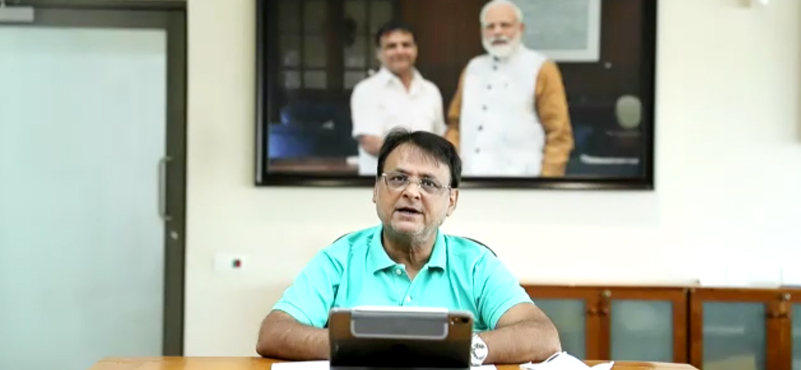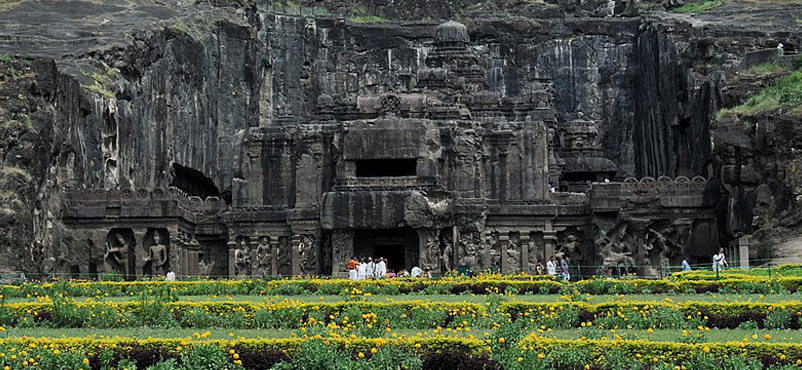A.P’s new capital Amaravati is an ambitious undertaking that may well become India’s smartest capital. This massive exercise, in collaboration with Singaporean firms, boasts of unique concepts and a massive scale. Its creation will also help Guntur and Vijayawada – the two suburbs of the new capital – strengthen business and tourist footfalls.
 After witnessing years of political slugfest and one of the bloodiest divisions of Indian states, Andhra Pradesh is, finally, beginning to give shape to its new identity. The new capital Amaravati – which translates to ‘the city that never decays’ – has been named after historic capital of the Satavahana kingdom, will stretch across river Krishna. As PM Modi laid the foundation stone of this ambitious undertaking, which will boast of many firsts in terms of technological application and sheer magnitude, it has already begun attracting investors.
After witnessing years of political slugfest and one of the bloodiest divisions of Indian states, Andhra Pradesh is, finally, beginning to give shape to its new identity. The new capital Amaravati – which translates to ‘the city that never decays’ – has been named after historic capital of the Satavahana kingdom, will stretch across river Krishna. As PM Modi laid the foundation stone of this ambitious undertaking, which will boast of many firsts in terms of technological application and sheer magnitude, it has already begun attracting investors.
With a unique concept of ‘navratnas’ incorporated in its genesis, Amaravati will be a heady mix of knowledge city, financial city, health city, tourism city, government city, sports city, electronics city, justice city and education city – all wrapped into a sprawling megapolis. Two firms from Singapore, with active participation from the Singapore government, are in the fray for this project, which has been planned in a phased manner – first phase of construction is expected to be concluded by 2018.
Sembcorp Development and Ascendas-Singbridge are the two companies that are likely to get the coveted job of designing this river-front marvel. Commenting on their pitch for the project, Sembcorp Development chief executive Kelvin Teo said that the company had extensive experience of handling crucial projects across Asia and Andhra Pradesh. “For over 20 years, we have been at the forefront of many government-supported projects. We have conceptualized 13 large-scale integrated urban development covering 11,000ha of land across Asia, and invested in more than 3,300MW of thermal and renewable power assets across seven Indian states, including Andhra Pradesh,” he said to a leading newspaper. While Ascendas-Singbridge, deputy chief executive Manohar Khiatani, who is also president and chief executive of Ascendas, shared to the media that Andhra Pradesh presented an exciting chance for their firm to deepen its presence in India. “We will study the master plan. When it is available, to identify areas where we could potentially participate in and contribute our expertise in urban development,” he commented.
Amaravati is slated to be a two billion dollars push, and the master plan has already been submitted by the Singapore government for the ‘Seed Capital Area’ of Andhra Pradesh. The plan consists of creating an administrative capital of the state, along with residential towers, recreational facilities, water-bodies and much more. As per a presentation made by the Singapore government the capital city master plan moots a network of waterways stretching over 80km along river Krishna, covering 3% of the total area. Canal parks, island resorts, an island-themed park, an amphitheater, and a waterfront boulevard straddling 35km along river Krishna have been planned. The city will also be a transit hub with a dedicated freight corridor. It will further be connected to the capital via Hyderabad. The core capital region, itself, has been designed featuring a regional expressway and an outer regional expressway linking it to satellite towns.
These developments will profoundly benefit neighboring Vijayawada and Guntur.
A look at the Capital Region Master Plan document reveals that pharmaceuticals, integrated textiles and cement plants have been identified as strongest pegs for growth drivers for Guntur district. While integrated textiles and petrochemicals have been chosen for Krishna. Apart from these, food processing parks and modern industrial townships have been mooted for both.
To meet its extraordinary land requirement, the state, to its credit, has put to use some innovative means by creating a lank bank of 3 lakh acres for the city, additionally planning to add 7 lakh acres for the planned industrial area
With an aggressive impetus on attracting investment and creating new infrastructure to sustain its momentum of development, the state is also in midst of upgrading its aviation infrastructure. A new terminal was recently unveiled at the Tirupati airport, enabling it to handle code ‘C’ and ‘D’ types of aircrafts. Its spiral effect in generating employment and tourism was not lost on the PM, who noted at its inauguration function that, “Such is the power of tourism today, that it provides employment to the poorest of the poor.”
Andhra’s bid for a world-class city and major infrastructural augmentation is a laudable move, it will help India better grasp challenges in developing world-class infrastructure. It also presents with itself a gamut of opportunities in creating more services and industries around them facilitating movement of people.
India aims to construct 100 SMART cities, Amaravati may turn out to be one of them.
New Integrated Terminal at Tirupati Airport will bring more employment and business into Temple town, says PM
As PM Modi inaugurated a new integrated terminal building at Tirupati Airport, he stressed at the need for augmenting tourism related infrastructure at every tourist destination and transit point. Hoping that the newly constructed structure would help create a better experience for travellers, he said, “For the convenience of the tourists, both foreign and domestic, we will be setting up WiFi points, hotel accommodations (via PPP modes) and much more, to make their stay comfortable.” The importance of this development in creating more employment opportunity was also not lost on him, who while reminiscing his past commented that, “Right from a fruit seller to a person selling biscuits, tourism destinations help people to earn something. Even a ‘tea seller’ can gain some money.”
The new Integrated Terminal Building, as per AAI’s release, is capable to handle ‘500 domestic and 200 International Passengers at a go. A steel and glass structure with all modern passenger amenities’, the terminal is spread in an area of 16,500 sqm with 5,500 sqm of basement area. The design of the building has been based on ‘Garuda’ and it is equipped with modern energy saving mechanisms.
Tirupati being one of the most visited spiritual centers in the country and considering the massive influx of devotees, the expansion in airport infrastructure is not only well-timed but a welcome move. As Andhra embarks on a never before infrastructural push, improving airport infrastructure will help it cater to more movement and consequently more business into the holy town.



































